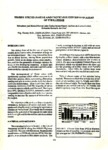Use este identificador para citar ou linkar para este item:
http://www.alice.cnptia.embrapa.br/alice/handle/doc/668968Registro completo de metadados
| Campo DC | Valor | Idioma |
|---|---|---|
| dc.contributor.author | NEVES, E. J. M. | pt_BR |
| dc.contributor.author | MATOS, J. C. S. | pt_BR |
| dc.contributor.author | CANTO, A. do C. | pt_BR |
| dc.contributor.author | SILVA, S. E. L. da | pt_BR |
| dc.date.accessioned | 2015-08-13T07:23:48Z | - |
| dc.date.available | 2015-08-13T07:23:48Z | - |
| dc.date.created | 2000-05-17 | pt_BR |
| dc.date.issued | 1995 | pt_BR |
| dc.identifier.citation | In: SYMPOSIUM ON THE MANAGEMENT AND REHABILITATION OF DEGRADED AREAS AND SECONDARY FORESTS IN AMAZONIA, 1993, Santarém. Proceedings... Rio Piedras: International Institute of Tropical Forestry/USDA - Forest Service, 1995. | pt_BR |
| dc.identifier.uri | http://www.alice.cnptia.embrapa.br/alice/handle/doc/668968 | pt_BR |
| dc.description | The objectives of those trials are: 1) to evaluate the evaluate the silvicultura behaviour of native and exotic forest spcies selecting the most promising for agroforestry systems on terra firme; 2) to verify the correlation between the potential of the species for cultivation in full sunlight and for the enrichment of secondary forests. The species studied generally performed better when planted in full sunlight. Noteworthy among these are Acacia mangium, Trattinickia burserifolia (breu scuruba), Swietenia macrophylla (mogno), Cedrela odorata (cedro vermelho), Carapa guianensis (andiroba), Eucalyptus urophylla (eucalipto), Peltophorus dubius (canafistula), Enterolobium contortisiliquus (orelha-de-negro), Jacaranda copaia (Para-para), and Ceiba pentandra (sumauma) due to their excellent growth rates, both in height and diameter. As to the rate, both the native and exotic species performed satisfactorily. Of the native species only Striphondendro guianensis (favia timbauba) showed a poor survival rate (40%). The species acacia, breu sucuruba and Scherolobium paniculatum (taxi branco) when planted in enrichment rows in secondary forest, however, presented slightly higer mortality rates at twelve months, much higher than plantings in full sunlight. At this age the meliaceous planted in full sunglight began showing signs of the attack of the Hypsipyla grandella, with the highest incidence occurring in cedro vermelho. In twelve months most of the speceis adapted well to the edapho-climatic conditions under study. However, the short amount of time of the evaluation does not permit more specific conclusions. | pt_BR |
| dc.language.iso | eng | eng |
| dc.rights | openAccess | eng |
| dc.subject | Brasil | pt_BR |
| dc.subject | Amazonas | pt_BR |
| dc.subject | Manaus | pt_BR |
| dc.subject | Shading | pt_BR |
| dc.subject | Insolation | pt_BR |
| dc.title | Timber species (native and exotic) for deforested areas of terra firme. | pt_BR |
| dc.type | Artigo em anais e proceedings | pt_BR |
| dc.date.updated | 2015-08-13T07:23:48Z | pt_BR |
| dc.subject.thesagro | Árvore | pt_BR |
| dc.subject.thesagro | Essência Florestal | pt_BR |
| dc.subject.thesagro | Floresta Tropical Úmida | pt_BR |
| dc.subject.thesagro | Iluminação | pt_BR |
| dc.subject.thesagro | Insolação | pt_BR |
| dc.subject.thesagro | Performance | pt_BR |
| dc.subject.thesagro | Silvicultura | pt_BR |
| dc.subject.thesagro | Sombreamento | pt_BR |
| dc.subject.nalthesaurus | forest trees | pt_BR |
| dc.subject.nalthesaurus | silviculture | pt_BR |
| dc.subject.nalthesaurus | solar radiation | pt_BR |
| dc.subject.nalthesaurus | tropical rain forests | pt_BR |
| dc.format.extent2 | p. 170-173. | pt_BR |
| riaa.ainfo.id | 668968 | pt_BR |
| riaa.ainfo.lastupdate | 2015-08-12 | pt_BR |
| dc.contributor.institution | EMBRAPA-CPAA. | pt_BR |
| Aparece nas coleções: | Artigo em anais de congresso (CPAA)  | |
Arquivos associados a este item:
| Arquivo | Descrição | Tamanho | Formato | |
|---|---|---|---|---|
| p.170173.pdf | 2,36 MB | Adobe PDF |  Visualizar/Abrir |









